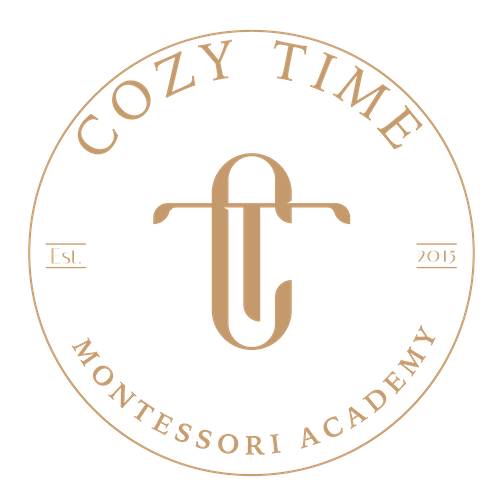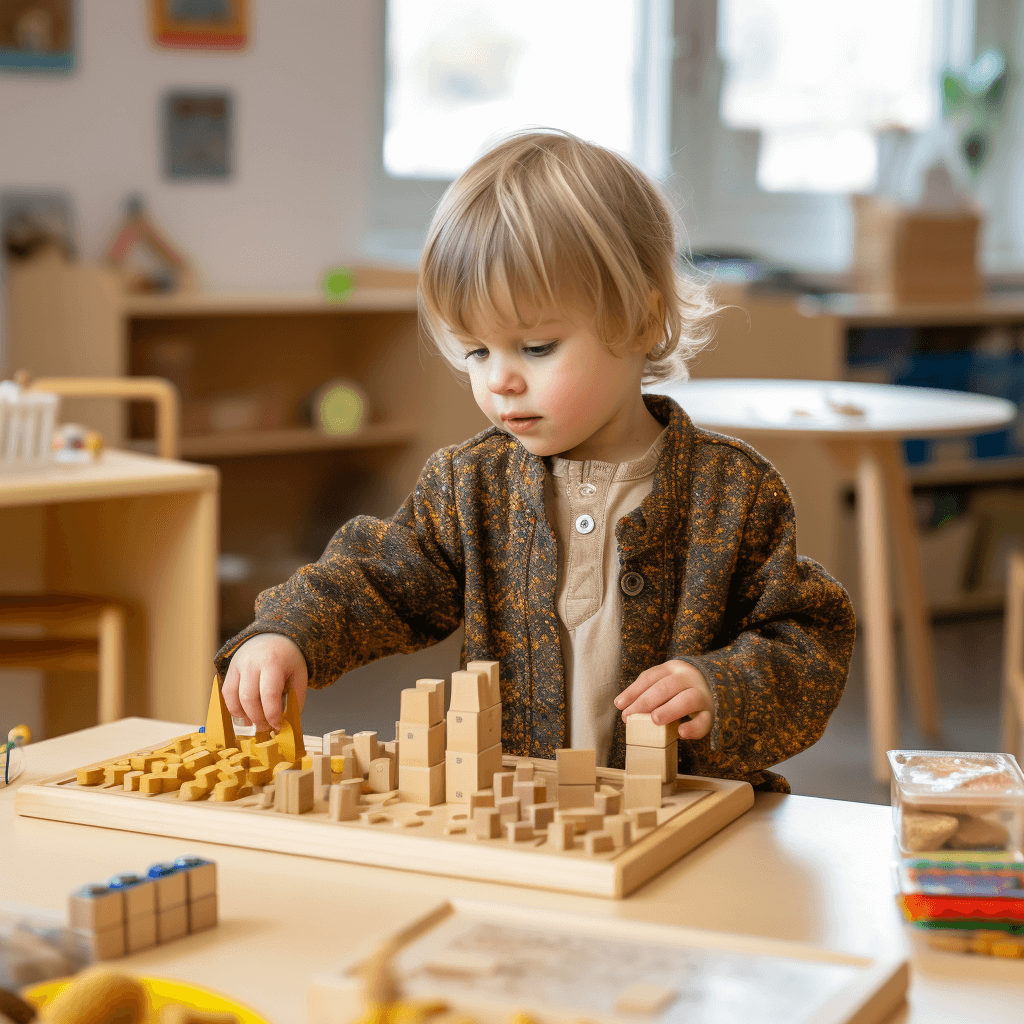Music and Art play an essential role in Montessori education. At the core of the Montessori method is a belief that children learn best when they are engaged in hands-on experiences that involve their whole body and mind. It’s no surprise then, that music and art have a central place in the Montessori curriculum. In this blog post, we will explore how music and art foster cognitive development, creativity, and emotional intelligence in young learners. We will also dive into techniques for teaching music and art in a Montessori classroom and how these activities promote a holistic approach to education. So, whether you’re a parent or teacher, this post will provide you with insights into how Montessori differs from other educational approaches in implementing music and art as integral components of learning.
Understanding Montessori Method and Its Emphasis on Art and Music
Montessori education incorporates art and music as essential components to nurture the holistic development of children. In a Montessori classroom, art and music activities are seamlessly integrated into the daily routine, providing children with ample opportunities for self-expression and creativity. The Montessori method recognizes that art and music engage the whole child, stimulating their cognitive abilities and enhancing their overall learning experience. These activities not only allow children to explore their artistic talents but also foster collaboration and social skills as they engage with their peers. Montessori music activity ideas, such as rhythm games and collaborative songwriting, further enrich this experience by cultivating a love for music while enhancing listening skills and memory. Through these hands-on experiences, children develop a deeper appreciation for the arts, which complements their academic learning and personal growth.
Through art and music, children are encouraged to explore their creative potential and develop their fine motor skills. The Montessori approach emphasizes the importance of hands-on experiences, allowing children to engage with various materials and instruments to create and express themselves. Whether it’s painting, sculpting, playing musical instruments, or singing, these activities are designed to foster cognitive development and stimulate the absorbent minds of early childhood.
In the Montessori environment, both indoor and outdoor activities are incorporated to provide a well-rounded experience. Music teachers and art instructors play a vital role in guiding and encouraging children to embrace these forms of self-expression. With Maria Montessori’s vision at its core, a Montessori school offers a unique approach to education that recognizes the value of art and music in nurturing the overall growth and enjoyment of preschool and toddler-aged children.
Role of Music in Montessori Education: Fostering Cognitive Development
Music plays a crucial role in Montessori education, fostering cognitive development in children. Through music education, students enhance their cognitive skills such as memory, attention, and problem-solving. Montessori teachers create a rich musical environment that exposes children to different musical styles, helping them develop a love for music.
By engaging in music activities, children learn about rhythm, tempo, and coordination. They are introduced to various musical instruments, which not only develop their auditory skills but also improve their motor skills.
The Montessori approach recognizes the importance of music in stimulating brain development. By incorporating music into the daily life of the classroom, teachers provide children with opportunities for cognitive growth and exploration.
With Maria Montessori’s emphasis on early childhood education, music becomes an integral part of the Montessori environment. Preschoolers and toddlers engage in indoor and outdoor music activities, allowing them to absorb musical concepts and derive enjoyment from the experience.
In conclusion, music education in Montessori classrooms plays a significant role in fostering cognitive development. It enhances memory, attention, and problem-solving skills while developing a love for music and creating a stimulating environment for brain development.
Techniques for Teaching Music in a Montessori Classroom
Montessori teachers employ various techniques to teach music in the classroom. One effective method is using the Montessori bells, which help children develop musical understanding and pitch discrimination. Music lessons in Montessori involve a combination of singing, movement, and playing musical instruments. By integrating music with other subjects like math and language, Montessori classrooms create a holistic approach to learning. Visual aids and props are used to enhance music education, providing children with a hands-on and immersive experience.
In a Montessori environment, children are encouraged to explore different music styles and even create their own compositions. This fosters their creativity and self-expression while allowing them to appreciate different forms of art. Whether through indoor or outdoor activities, music activities in Montessori contribute to the development of cognitive skills, coordination, and auditory perception. Maria Montessori’s approach recognizes the importance of early childhood development, where music plays a vital role in engaging the absorbent mind of preschoolers and toddlers.
By incorporating music into the daily routine of a Montessori classroom, teachers nurture a love for music and provide an avenue for children to explore their musical talents. The enjoyment and appreciation of music not only enrich the children’s lives but also promote their cognitive development. The Montessori method recognizes the power of music as a tool for nurturing holistic growth and cultivating a lifelong passion for the arts.
Why is Art Integral to Montessori Education?
Art plays a vital role in Montessori education as it allows children to express their creativity and develop their imagination. Through art activities, children can enhance their problem-solving and critical thinking skills. Montessori believes that art is a means of communication and self-discovery for children, providing them with a solid foundation for future artistic endeavors.
The Impact of Art Activities on Child Development in Montessori
Art activities in the Montessori classroom play a crucial role in child development. These activities stimulate the development of fine motor skills and hand-eye coordination, helping children improve their ability to manipulate objects with precision and control. In addition, art lessons in Montessori expose children to a variety of art techniques and materials, allowing them to explore and experiment with different artistic mediums.
Engaging in art activities also promotes cultural lessons and appreciation for diverse artistic expressions. Through art, children learn about different cultures and traditions, developing an understanding and respect for the world around them. Furthermore, art allows children to observe details, make connections, and think creatively. They learn to appreciate the beauty in their surroundings and express themselves in unique and innovative ways.
Apart from fostering creativity and cultural awareness, art activities in Montessori also encourage self-expression and boost children’s self-confidence. By creating artwork, children gain a sense of accomplishment and pride in their abilities. They learn to trust their own ideas and develop a positive self-image.
In conclusion, art activities have a significant impact on child development in the Montessori classroom. By engaging in these activities, children develop their fine motor skills, cultivate cultural appreciation, enhance their creativity, and build self-confidence. The Montessori approach recognizes the power of art in shaping holistic development in early childhood education.
How Does Music and Art Promote a Holistic Approach in Montessori Education?
Music and art in Montessori education foster a holistic approach by engaging children’s senses, emotions, and intellect. Recognizing the interconnectedness of music, art, and overall development, Montessori nurtures children’s social, emotional, cognitive, and physical well-being. Through these creative outlets, Montessori cultivates a love for learning and creativity in children.
How Does Montessori Differ from Other Educational Approaches in Implementing Music and Art?
Montessori sets itself apart by seamlessly integrating music and art into the curriculum, treating them as integral parts of education rather than separate subjects. Unlike traditional approaches, Montessori prioritizes child-led exploration and self-expression in music and art, providing a nurturing environment for individualized learning and hands-on experiences. This holistic approach ensures that music and art contribute to the overall development of the child.
Sum Up
In conclusion, music and art play a vital role in Montessori education, fostering holistic development in children. The Montessori method recognizes the power of creative expression in enhancing cognitive skills, emotional intelligence, and overall well-being. Through techniques like singing, rhythm, and movement, music becomes a tool for cognitive development and self-expression. Similarly, art activities stimulate imagination, creativity, and fine motor skills. By integrating music and art into the curriculum, Montessori education provides a multi-sensory and personalized learning experience for children. It allows them to explore their interests, develop a sense of aesthetics, and cultivate a lifelong appreciation for the arts. Embrace the Montessori approach and give your child the opportunity to thrive creatively and academically.


